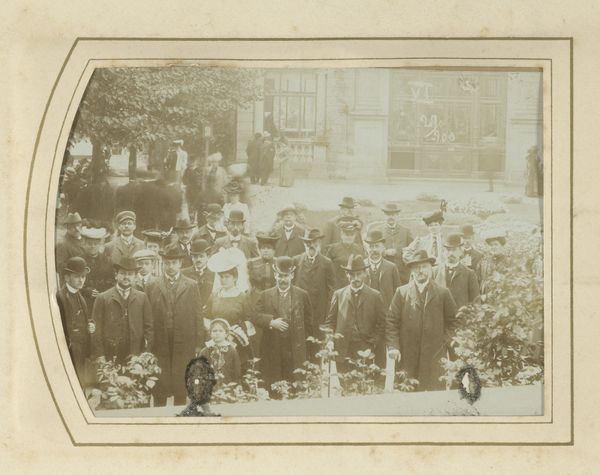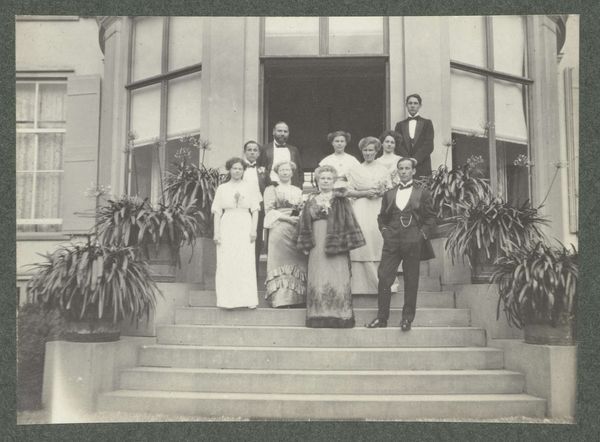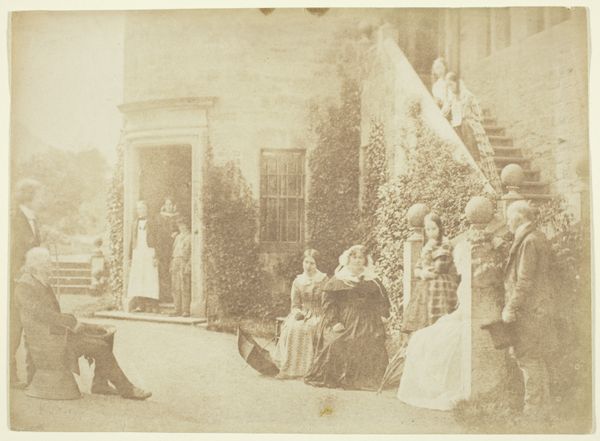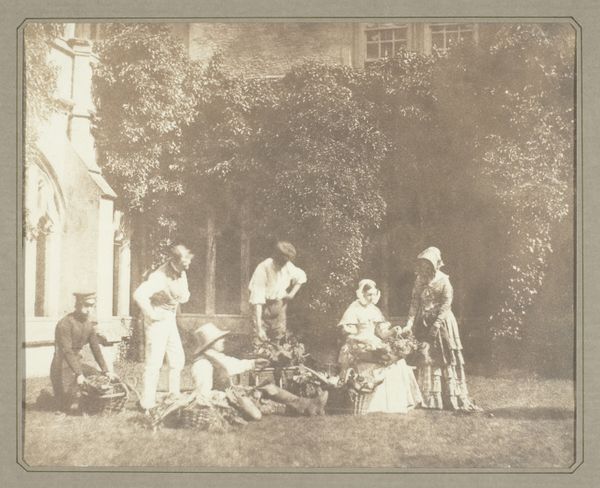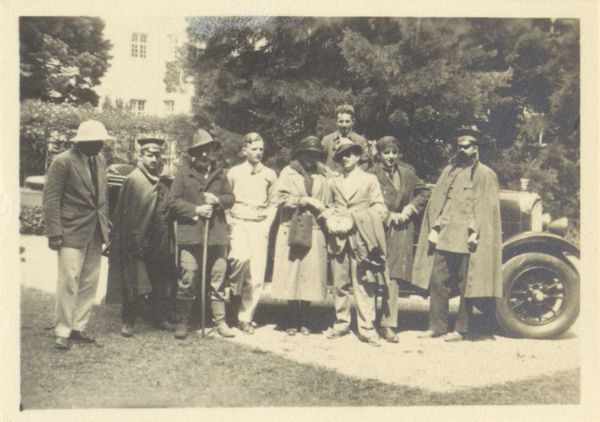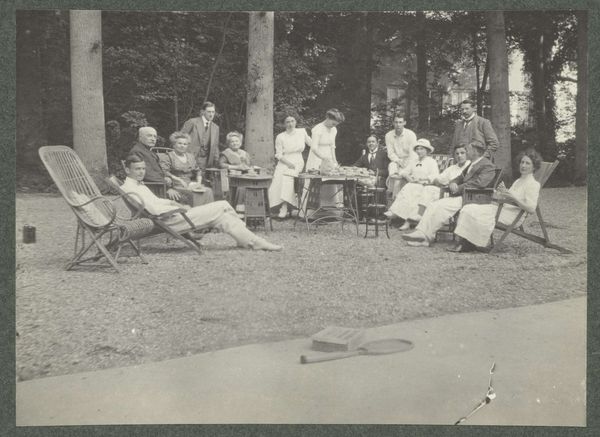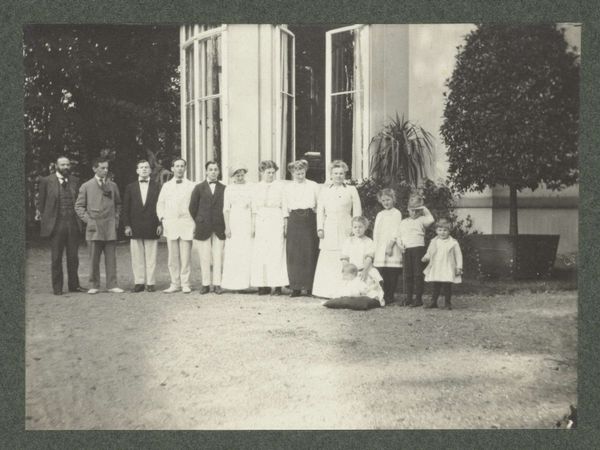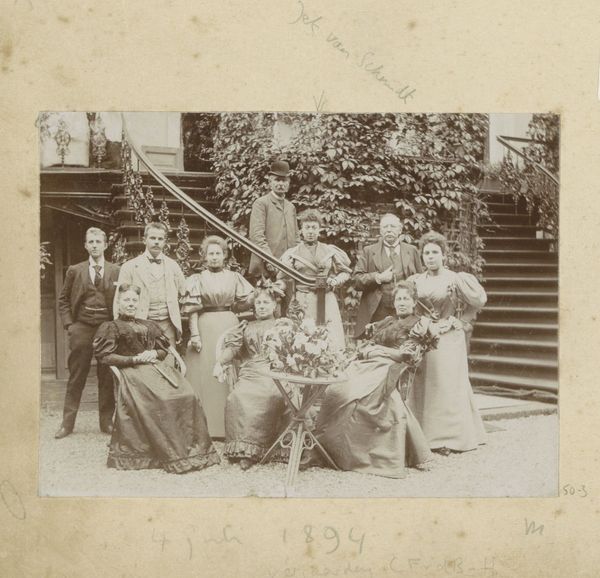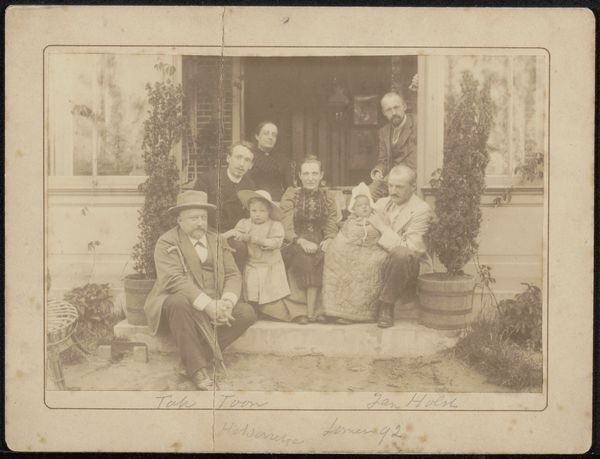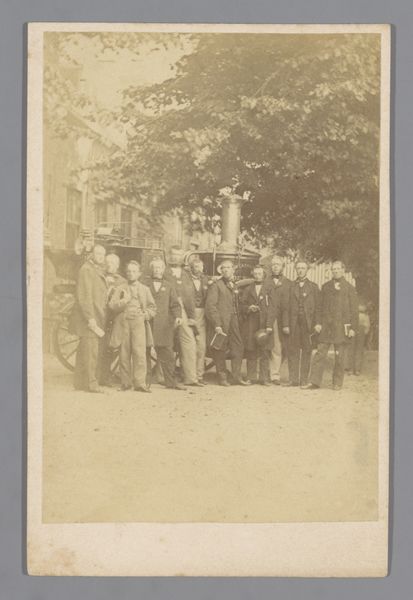
photography
#
portrait
#
ink paper printed
#
wedding photography
#
street-photography
#
photography
#
group-portraits
#
genre-painting
Dimensions: height 73 mm, width 98 mm, height 198 mm, width 263 mm
Copyright: Rijks Museum: Open Domain
Curator: Standing before us, we have a fascinating photographic print from 1913: "Groepsportret van de familie Kessler," housed here at the Rijksmuseum. Editor: My immediate reaction is one of stillness and formality. It's carefully posed, the setting lending a classicist almost theatrical air, despite its being a relatively simple photograph printed on what appears to be ordinary paper. Curator: It's striking how the photograph elevates the family using carefully constructed elements within the material world. There’s the clear staging on the stone staircase, with a romanticized classical pavilion built behind it. Editor: The positioning of that statue in the pavilion as well—it functions as a potent symbol. Statues in this period were strongly associated with idealized womanhood, almost an ethereal promise of harmony and balance presiding over the Kessler family. Curator: The act of printing this image – transferring the captured image onto paper – renders the Kesslers as material entities participating in their time, class, and consumer society. What was the printing process for photographs in that time period and what effect did this have on circulation of imagery like this? Editor: Interesting thought! We see visual traces, too. Notice the draped sash running between some of the figures in the back? It could be a purely decorative object, of course. It reads almost like an early version of the ‘ribbon cutting’ celebrating industry and family ties and the Kessler's high social standing. Curator: Yes! We’re also looking at a photographic document intended to create very specific messages about family values, using not only clothing, setting and composition to suggest success, order, and connection, but using accessible printing and production methods. This could be shared and replicated so they could physically mail representations of themselves to reinforce their place and brand. Editor: Absolutely. When we see the family posed beneath this statue, the whole composition emphasizes this era's values and what it meant to project a cultivated, ideal family identity to others. Looking at the materials now informs the experience we’re having as twenty-first-century observers. Curator: For me, seeing the means of production and material elements elevates how it acts as a time capsule of class expectations and self-regard, and also how it reinforces consumer-oriented values. Editor: And understanding its symbolism, what those statues and the ribbon meant at the time, helps us understand the visual cues they were trying to construct.
Comments
No comments
Be the first to comment and join the conversation on the ultimate creative platform.
